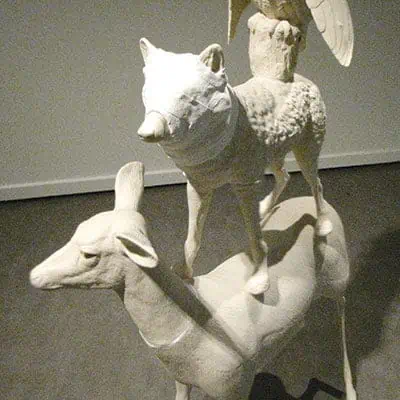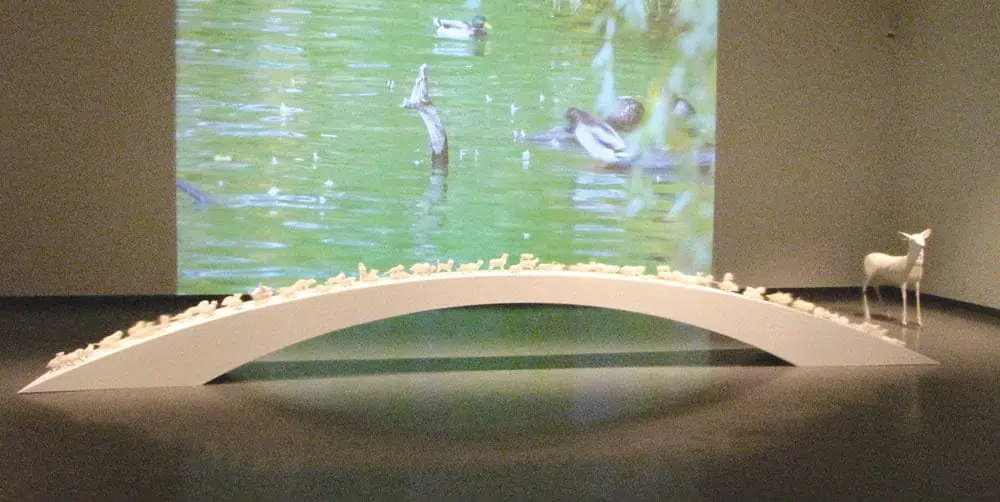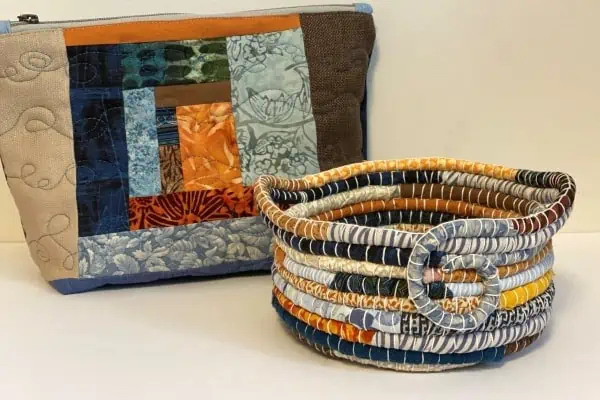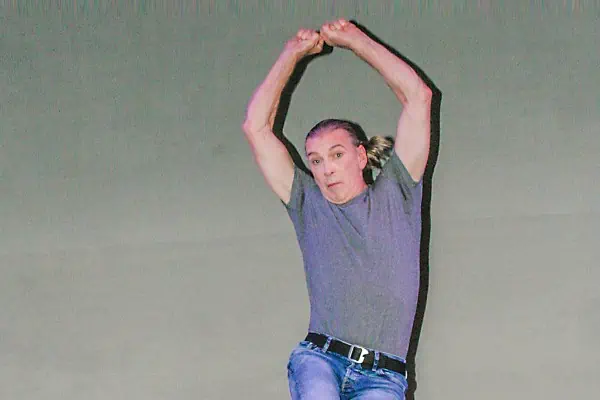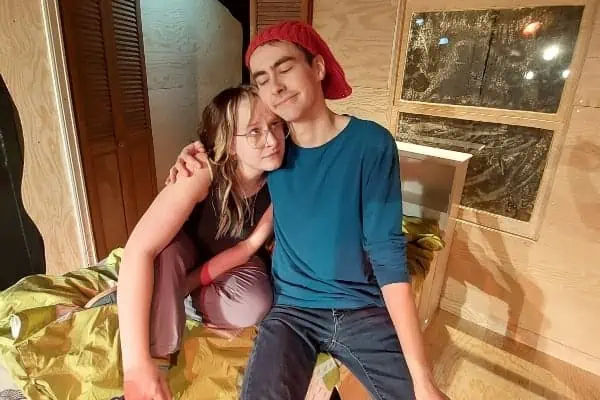Whitehorse artist Simon James Gilpin takes us for a walk through tangled thickets of oil paint and graffiti in Wilderness, City.
Two art shows at the Yukon Arts Centre Gallery explore the tension between the human and the natural world
Bestiary, by Janet MacPherson
MacPherson’s show presents sculptures as part of an overall installation including sound. For one piece, you have to bend down at an odd angle to look into a circular hole in a box, reminiscent of a bird house. Inside you see video of a banded bird fluttering its wings on a perch. It seems troubled, and trapped.
A fox-like animal stands in the middle of the gallery, a strategy used by other artists – such as Ontario artist Mary Anne Barkhouse – to challenge the authority of the gallery space. But unlike Barkhouse’s bronze and whole stylized animals, who seem self-possessed and confident, bandages swath this Macpherson’s sculpture’s fragile porcelain head.
An architectural form called “Migration,” is set in the middle of the gallery space; a large arc, it supports a parade of porcelain animals.
I wonder if the form is a pun on Noah’s ark. These animals are also all damaged somehow, bandaged, often over the eyes. A goat has lizard feet. Another goat’s horns are cut off, and the stumps gilded. A mouse lies on its side, with gilded hooves and human hands.
These animals evoke worry rather than their own power. They give me a queasy feeling. MacPherson’s artist statement speaks of hybridization, but what I see evokes ideas of cloning or grafting, growing parts of one animal on another. They make me worry in a vague, but insistent way about what kind of things us humans are getting up to in our relationship with the natural world.
Wilderness, City by Simon James Gilpin
In Wilderness, City, Gilpin groups paintings. This makes sense, as he’s exploring a juxtaposition between an urban and wild world.
Gilpin is working in very thick oil paint, flicked and thrown at the canvas. These layers would take months to build up in layers. They create a dynamic and complex surface that your gaze can get lost in.
The show includes two grids of nine intimate 6×8 inch paintings. They include nails, and paint built up over one inch thick in places. Greens and earth toned studies contrast with evocations of concrete and spray paint.
Gilpin also groups his larger works. Two paintings lead us into the show, then the other large paintings inside appear in groups of three – each canvas has a title, but the suite of three has its own title.
Gilpin sets up an opposition between natural and human environments in his artist statement. I find his evocations of natural landscapes to have the thick, overgrown quality of the places that nature takes over in cities. While two of his human environments include human figures, others peek into underpasses. Bright sunlight casts deep shadows. A careful attention to the geometry of his architectural components pins and pushes against Gilpin’s spontaneous mark making with the flicked oil paint.
Gilpin also uses graffiti to denote the human environment.
In “Crimson,” layered text and textures harmonize in a similar complexity to the tangled thickets on either side, despite its contrasts in greys and reds, and textures that have been altered with a wide scraper, with its architectural associations. Black drips, and the name “Ben” in marker, evoke a human voice.
Gilpin’s show took me back to youthful travels to Athens, for example, where, as a young woman from a small Ontario city, I would seek out places to hide from the busy-ness of the city. Thick, overgrown places like this often exist if you look for them, even in places that have been cities for a long time.
Gilpin’s show leaves me with more confidence that the natural world can push back against our human machinations.

Both shows continue at the Yukon Arts Centre until February 24. You can see them Monday to Friday between 10 a.m. and 5 p.m., and Saturday from noon to 5 p.m., or when you attend a performance in the theatre.

